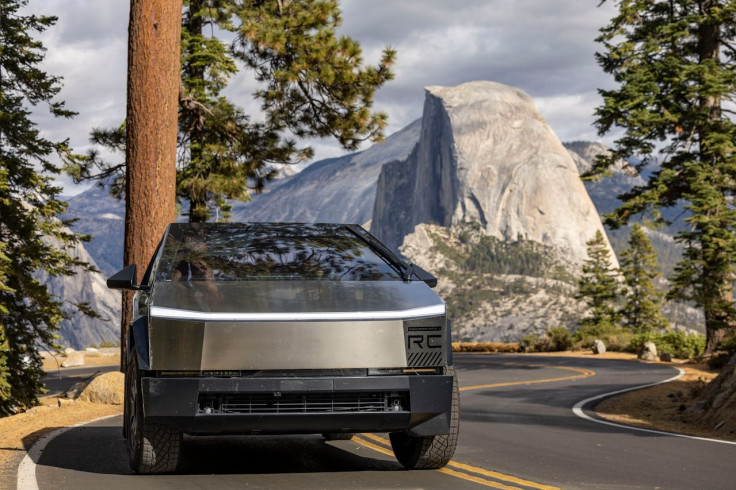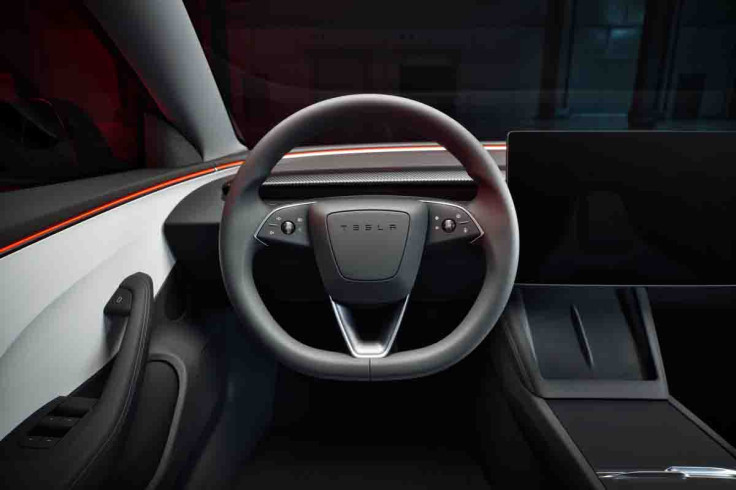
The Canadian government has taken a groundbreaking step by granting Tesla an exemption for its revolutionary Cybertruck.
This exemption allows the truck to utilise steer-by-wire technology. This cutting-edge system replaces the traditional mechanical link between the steering wheel and the wheels with electronic controls and actuators.
The Future Of Steering
Traditional steering systems rely on a direct mechanical connection, often a steering column, to translate the driver's input to the vehicle's wheels. Steer-by-wire technology represents a significant departure from this approach.
Tesla's embrace of steer-by-wire technology goes beyond just the Cybertruck. It signifies a wider shift within the auto industry towards digital and responsive vehicle controls.

Eliminating the mechanical linkage offers several advantages: reduced vehicle weight, simplified manufacturing processes, and the potential for enhanced safety by implementing more adaptable control algorithms.
Earlier this year, a Tesla Cybertruck customer reported a malfunction with the vehicle's steer-by-wire system shortly after leaving the dealership. This malfunction triggered the truck's limited functionality (limp mode), restricting its speed to four miles per hour.
Canada Navigates The Regulatory Landscape For Steer-By-Wire
Acknowledging the potential of steer-by-wire technology, Canada's regulatory body granted Tesla a special exemption. According to a report by Tesla Mag, this exemption allows the Cybertruck to bypass the standard requirement for a minimum steering angle of ±270 degrees.

This metric is typically crucial for testing the safety and performance of traditional steering systems. The Canadian exemption serves as a significant milestone. It conveys trust in the safety and performance of steer-by-wire technology and exemplifies regulatory bodies' willingness to adapt alongside technological advancements.
This regulatory flexibility is crucial for fostering innovation within the automotive industry. By embracing such flexibility, the path is paved for developing more unconventional and groundbreaking vehicle designs.
Steer-By-Wire: A Potential Industry Game-Changer
Tesla's adoption of steer-by-wire could serve as a tipping point, prompting other manufacturers to explore this innovative technology. The potential benefits extend far beyond mere manufacturing efficiencies and safety improvements.
Steer-by-wire opens exciting new avenues for autonomous driving technologies. By enabling the integration of more sophisticated control algorithms and sensors, steer-by-wire can pave the way for developing highly responsive and adaptable autonomous driving systems.
Beyond its impact on manufacturing and autonomous driving, steer-by-wire technology has the potential to revolutionise the user experience. By enabling customisable driving dynamics, steer-by-wire empowers drivers to tailor the feel and responsiveness of their vehicles to individual preferences.
This customisation could range from fine-tuning steering sensitivity to completely reprogramming the driving interface based on specific situations or personal tastes.
The Future Of Automotive Design
The Elon Musk-led automotive company's pioneering use of steer-by-wire technology in the Cybertruck and Canada's groundbreaking exemption could signal a significant shift in the automotive landscape.
If successful, this technology can become a standard feature for Tesla vehicles and potentially for the entire industry, shaping the future of car design and driving experiences.
The UK's automotive industry thrives on progress, mirroring Canada's openness to regulatory flexibility for advancements like steer-by-wire. The government's push for eco-friendly and innovative transportation solutions further strengthens this parallel.
Similar adaptations might be made in the UK, potentially revolutionising how drivers control and interact with their vehicles. With its innovative steer-by-wire technology, Cybertruck exemplifies the automotive industry's unwavering commitment to progress.
As we hurtle towards a digitally driven future, steer-by-wire and similar advancements will undoubtedly play a central role in shaping the next generation of vehicles.
These technologies promise enhanced safety and efficiency and a whole new level of customisation for drivers, empowering them to tailor their driving experience to their individual preferences.
However, concerns have recently been raised regarding electric vehicle safety - not just with the Cybertruck. A recent incident involved a motorist who sustained severe burns while attempting to rescue a child from a burning Volvo XC40 petrol-electric hybrid.







